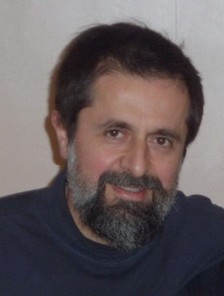
Predrag Repanić (1958, Serbia) completed his BA and MA studies in composition in the class of Professor Srđan Hofman. His works include various forms and genres, both vocal and instrumental, for soloists and symphonic ensembles alike. His pieces have been performed at various events, concerts, and festivals in Serbia and abroad, such as MUS, TMSJ in Opatija, the International Reviews of Composers in Novi Sad and Belgrade, Europhonia festival in Zagreb, Open – Music festival in Milan, East–West festival in Argentina, the Musical Evenings of RTS Channel 3, concert cycles of Belgrade Philharmonic, Jugokoncert, etc. There are studio recordings of most of them in the archive of the Serbian Broadcasting Corporation and the Sound Studio of the Faculty of Music in Belgrade. Those performances have been made by prominent ensembles and performers.
Repanić has won multiple anonymous competitions of the Composers’ Association of Serbia. He has also won numerous other awards, including the Josip Slavenski Award, the student October Award, and the award of the Vasilije Mokranjac Foundation. As a fellow of the German Institute for Contemporary Music (IMD), in 1990 he attended the 35th International New Music Course at Darmstadt, where he attended lectures by H. Lachenmann and I. Xenakis and was an active participant in the course given by B. Farneyhough. He is also active as a teacher and theorist. He teaches counterpoint and analysis at the Music Theory Department of the Faculty of Music in Belgrade. As a theorist, he has focused on renaissance techniques of composition, especially canonic writing, movable-counterpoint imitation, and cantus firmus writing. He has participated in numerous domestic and international symposia of music theory and analysis.
Canti di vita e morte, fragments of pain linked in an unsung Requiem for the ungrieved, for internal voices and string orchestra.
This work’s dramatic flow rests on a series of poetic and sacred texts, which, like a sort of internal voices, out of deeply personal reasons, constituted the guiding ideas of the work’s compositional flow, through which I tried to capture, using musical means, those tragic moments in the counterpoint of life and death when the latter has prevailed. In technical terms, the work consists of three movements/dedications, linked by means of a motto. It is complex in structure and predominantly polyphonic in texture. Each movement is based on an initial canonic drive (I – Frère Jacques, II – Summer Is Icumen In, III – my original ‘fuga canonica’ on motives from the main themes of Bach’s Art of the Fugue), with the second and third canonic drives symbolically broken off at their respective culmination points. With some additional borrowed thematic materials (from Mozart, Paganini, Mahler, Ligeti, Berg, et al.), in some of its elements or even layers, the work might occasionally sound ‘all-familiar’, but its quotations (whose choice, order, and interaction, mutual and with other layers of the piece, likewise have their own symbolic rationales) are not used literally, nor as ‘self-standing sound objects’ within an original whole; instead, all of the borrowed thematic materials are subjected to free elaboration akin to the procedures of the renaissance compositional techniques of paraphrasing and parodying.


